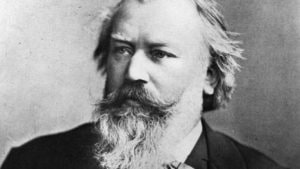Prelude to a Holy Week
Saint Barnabas Choir Spring Concert
Prelude to a Holy Week
Requiem
by Johannes Brahms
We invite you to be moved by exquisite beauty created by our Saint Barnabas Parish Choir and Orchestra.
Featuring Sarah Smith, Soprano; Stephen Schermitzler, Baritone
A bit about the piece…
Brahms’s first known use of the title Ein deutsches Requiem was in an 1865 letter to Clara Schumann in which he wrote that he intended the piece to be “eine Art deutsches Requiem” (a sort of German Requiem). Brahms was quite moved when he found out years later that Robert Schumann had planned a work of the same name.[1] German refers primarily to the language rather than the intended audience. Brahms told Carl Martin Reinthaler, director of music at the Bremen Cathedral, that he would have gladly called the work “Ein menschliches Requiem” (A human Requiem).[5]
Although the Requiem Mass in the Roman Catholic liturgy begins with prayers for the dead (“Grant them eternal rest, O Lord”), A German Requiem focuses on the living, beginning with the text “Blessed are they that mourn, for they shall be comforted.” from the Beatitudes. This theme—transition from anxiety to comfort—recurs in all the following movements except movements 4 and 7, the central one and the final one. Although the idea of the Lord is the source of the comfort, the sympathetic humanism persists through the work.[5]
Brahms purposely omitted Christian dogma.[6] In his correspondence with Carl Reinthaler, when Reinthaler expressed concern over this, Brahms refused to add references to “the redeeming death of the Lord”, as Reinthaler described it, such as John 3:16. In the Bremen performance of the piece, Reinthaler took the liberty of inserting the aria “I know that my Redeemer liveth” from Handel‘s Messiah to satisfy the clergy.[7]
Event at a glance
- April 8, 2017
- 4:00 pm–6:00 pm
- 25.00
- Saint Barnabas Episcopal Church 6715 North Mockingbird Lane Scottsdale, AZ 85253
And don't miss Dr. Richard Elliott, Organist of the Mormon Tabernacle Choir, on May 20!


